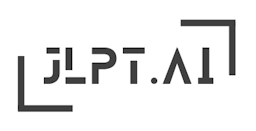

N1
音読み:i
訓読み:nokosu
イi
のこ.すnokosu
Inherit, bequeath, leave behind
Imagine a person walking down a road and leaving footprints behind. These footprints symbolize the things they leave behind or bequeath to others as their legacy.
The kanji '遺' is a higher-level character that may appear in JLPT N1 vocabulary and reading comprehension sections. It is less frequently encountered compared to lower-level kanji but is still important to understand for a comprehensive grasp of the language at an advanced level.
彼は遺産を子供たちに残しました。
He left his inheritance to his children.
かれはいさんをこどもたちにのこしました。
kare wa isan o kodomo-tachi ni nokoshimashita.
戦争の遺物が見つかりました。
Remnants of the war were found.
せんそうのいぶつがみつかりました。
sensou no ibutsu ga mitsukarimashita.
彼の遺志を継いで頑張ります。
I will carry on his will and do my best.
かれのいしをついでがんばります。
kare no ishi o tsuide ganbarimasu.